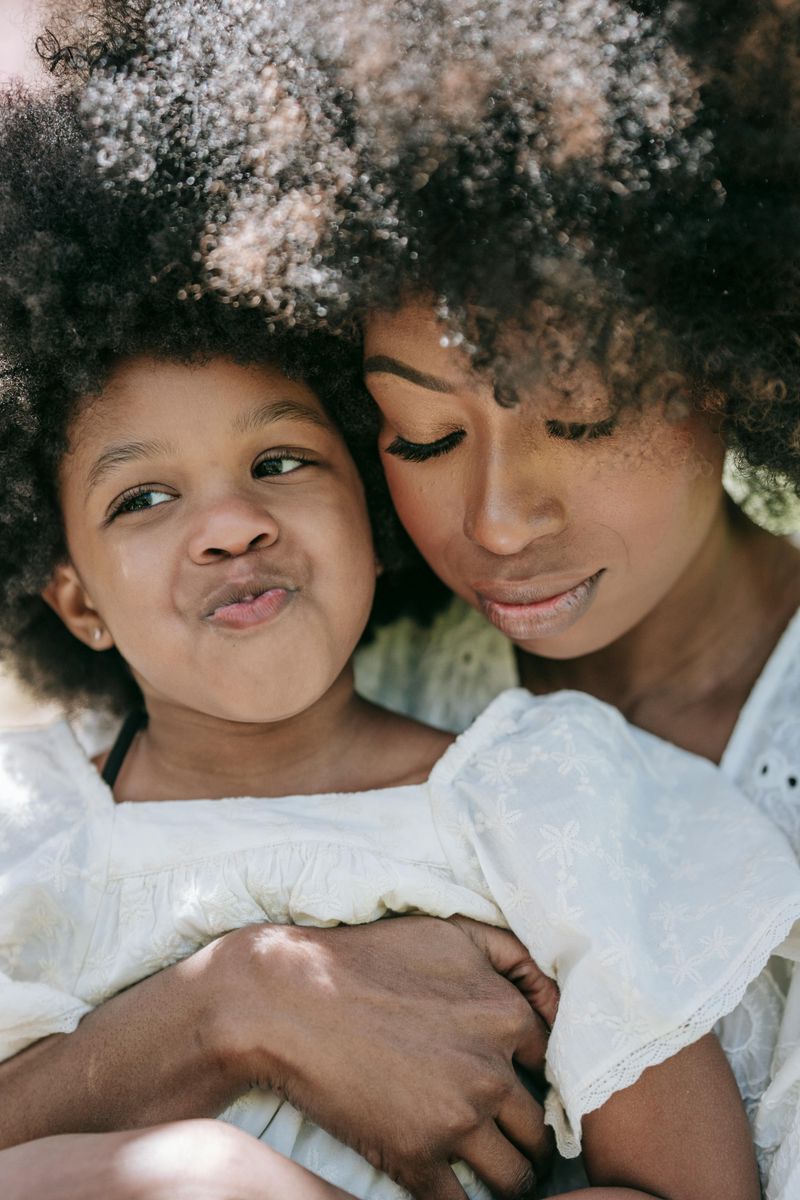15 Emotional Traits Science Says Could Be Passed from Parent to Child

Have you ever noticed yourself reacting to situations just like your mom or dad would? It’s not just coincidence. Scientists have discovered that many emotional traits can be passed down from parents to children through a combination of genetics and environmental influences. Understanding these inherited emotional characteristics can help us recognize patterns in our own behavior and better nurture our children’s emotional development.
1. Empathy’s Family Roots

Children of empathetic parents often develop remarkable abilities to tune into others’ feelings. When parents consistently acknowledge their child’s emotions and demonstrate compassion toward others, kids learn to recognize and respond to emotional cues.
Research from the University of Cambridge suggests that about 10% of our empathy capacity comes from genetic factors, while the rest develops through observation and experience. Kids who witness their parents comforting others or discussing feelings tend to mirror these behaviors.
Family dinner conversations about how different people might feel in various situations can strengthen this emotional muscle, creating a legacy of understanding that spans generations.
2. Anxiety’s Invisible Inheritance

The tendency toward worry often runs in families. Scientists at the University of Wisconsin found that babies of anxious parents show different brain activity patterns when exposed to new situations, suggesting a biological predisposition.
Parents who frequently express fear or excessive caution inadvertently teach children that the world is threatening. This combination of genetic vulnerability and environmental cues creates a powerful pathway for anxiety transmission.
Breaking this cycle requires conscious effort. When parents manage their own anxiety effectively and encourage healthy risk-taking, they can help children develop more balanced emotional responses despite any genetic predispositions.
3. Optimism’s Sunny Legacy

Ever met a family where everyone seems to look on the bright side? Research from the University of California suggests optimism has both genetic roots and environmental influences. Children naturally absorb their parents’ outlook on life.
When parents consistently frame challenges as temporary and solvable, kids develop what psychologists call an ‘optimistic explanatory style.’ This means they learn to interpret setbacks as specific rather than universal problems.
The Minnesota Twin Study found that identical twins raised apart still showed similar optimism levels, highlighting the genetic component. However, even children with a genetic tendency toward pessimism can develop greater optimism when raised by parents who model hopeful thinking.
4. Resilience: Bouncing Back Together

When life knocks you down, do you get back up? That resilient spirit often comes from watching parents navigate their own challenges. Children who witness parental perseverance develop neural pathways that support their own ability to cope with difficulty.
A fascinating study from Emory University revealed that families who share stories of overcoming adversity raise more resilient children. These narratives create a framework for children to understand that setbacks are normal and surmountable.
Resilience isn’t just about toughness—it’s about flexibility and adaptability. Parents who openly discuss their mistakes and recovery strategies give children permission to fail and try again, building resilience muscles that last a lifetime.
5. Perfectionism’s Double-Edged Sword

The drive for flawlessness often travels down family trees like an heirloom. Children raised by perfectionistic parents frequently absorb impossibly high standards, not just through genetics but through daily interactions.
Research from Michigan State University found that parents who frequently criticize or express disappointment with ‘good enough’ efforts inadvertently plant perfectionism’s seeds. The child learns that love and approval are conditional upon achievement.
This trait has complex origins—studies with twins suggest about 30% comes from genetics while the remainder stems from environment. Parents can help children develop healthier standards by celebrating effort over outcome and modeling self-compassion when facing their own imperfections.
6. Patience: The Quiet Inheritance

A child who watches their parent calmly wait in long lines or persist through tedious tasks absorbs powerful lessons about delayed gratification. The capacity for patience develops through both observation and neurological inheritance.
Stanford’s famous marshmallow experiment demonstrated that children’s ability to wait for rewards strongly predicts future success. What’s fascinating is how this ability clusters in families, suggesting both learned and inherited components.
Parents who narrate their own waiting process—”This is frustrating, but I’m staying calm because getting upset won’t make the line move faster”—provide children with an internal script they can use when facing their own challenges. This verbal roadmap helps develop the neural pathways that support patience.
7. Emotional Intelligence: The Family Superpower

Some families seem to navigate emotional waters with remarkable skill. Research from Yale suggests emotional intelligence—recognizing and managing feelings effectively—travels through generations through both nature and nurture channels.
When parents label emotions clearly—”You seem frustrated because your block tower fell”—children develop emotional vocabulary and awareness. This seemingly simple practice activates specific brain regions associated with emotional regulation.
Families with high emotional intelligence typically create safe spaces for expressing feelings without judgment. The University of Washington’s Family Conversations Lab found that children whose parents regularly discuss emotions show more advanced emotional understanding by age five, setting the foundation for lifelong emotional competence.
8. Independence: Freedom’s Family Tree

The confidence to think and act autonomously often begins with parents who balance protection with freedom. Children raised by parents who encourage age-appropriate independence develop neural pathways supporting decision-making and self-reliance.
A fascinating study from the University of Minnesota found that parents who allow natural consequences (within safe limits) raise children who show greater independence by adolescence. The child learns to trust their own judgment through practice.
Genetic factors play a role too—temperament studies suggest some children naturally seek more autonomy than others. However, parenting approaches can either nurture or suppress these tendencies, creating a powerful gene-environment interaction that shapes a child’s path toward independence.
9. Compassion’s Heartfelt Heritage

The tender concern for others’ suffering follows interesting patterns across generations. Neuroscience research reveals that witnessing compassionate acts activates mirror neurons in children’s brains, essentially wiring them for kindness.
Parents who demonstrate genuine concern for others—stopping to help someone who’s dropped their groceries or discussing others’ challenges with empathy—provide powerful templates for children’s behavior. The Max Planck Institute found that even toddlers from compassionate families show more helping behaviors toward strangers.
Twin studies suggest about 25% of variation in compassionate tendencies has genetic roots. However, family environment dramatically influences whether these tendencies flourish or remain dormant, highlighting how this emotional trait represents a beautiful dance between inheritance and upbringing.
10. Confidence: Standing Tall Together

Children of self-assured parents often develop remarkable belief in their own capabilities. This isn’t coincidence—researchers at Columbia University found that confidence has both genetic components and powerful environmental influences.
When parents consistently acknowledge efforts rather than just results, children develop internal motivation and self-trust. The way parents respond to failure proves particularly important; those who frame mistakes as learning opportunities rather than disasters help children maintain confidence through challenges.
Family videos often capture this inheritance in action—watch how similarly a confident child and parent might approach a new situation, from posture to speech patterns. This mirroring happens through both unconscious observation and the neurological pathways shaped by repeated experiences of encouragement.
11. Sensitivity: The Delicate Inheritance

Some children notice everything—the slight change in someone’s tone, the beautiful pattern of light through leaves. This heightened awareness often traces back to parents with similar perceptiveness.
Research on what psychologists call ‘sensory processing sensitivity’ suggests about 20% of people are born highly sensitive, with more reactive nervous systems. When sensitive children have similarly attuned parents, they receive validation for their perceptions rather than being told they’re ‘too sensitive.’
These families often develop special appreciation for subtle experiences—the perfect harmony in music, the complex flavors in food. While this sensitivity can present challenges in an overwhelming world, sensitive parents can teach children valuable coping strategies, transforming potential vulnerability into extraordinary perception.
12. Assertiveness: Speaking Up Across Generations

The capacity to express needs clearly without aggression or submission follows fascinating patterns in families. Children who witness parents standing up for themselves appropriately develop internal permission to do the same.
Research from Arizona State University found that assertiveness has moderate genetic components, but parental modeling plays an even stronger role. When children hear parents use phrases like “I feel uncomfortable with that decision” rather than aggressive or passive responses, they absorb valuable communication templates.
Girls particularly benefit from seeing mothers demonstrate healthy assertiveness, countering societal messages about female accommodation. The beautiful complexity is that even parents who struggle with assertiveness can consciously teach children skills they themselves are still developing, breaking intergenerational patterns.
13. Gratitude’s Generous Cycle

Families who regularly express thankfulness raise children who notice life’s gifts, big and small. This appreciation habit has both surprising genetic links and powerful environmental influences.
When parents consistently acknowledge good things—”I’m grateful for this beautiful day” or “Thank you for helping me”—children develop neural pathways that automatically scan for positives. UC Davis research found that gratitude practices actually change brain activity in regions associated with moral cognition and reward.
Twin studies suggest modest heritability for gratitude tendencies, but family practices dramatically amplify these predispositions. The simple ritual of sharing something you’re thankful for at dinner creates powerful patterns that children carry forward, potentially influencing generations to come.
14. Emotional Regulation: Calm’s Contagion

The ability to manage strong emotions without being overwhelmed shows remarkable patterns across generations. Children who witness parents handle frustration with deep breaths and measured responses develop similar capabilities.
Fascinating research using fMRI scans shows that emotional regulation activates specific brain regions that develop through both genetic programming and repeated experience. When parents narrate their own regulation—”I’m feeling frustrated, so I’m taking a moment to calm down”—they provide children with an internal script.
The University of Michigan found that families tend to share similar emotional regulation capacities, suggesting both inherited and learned components. Parents who struggle with regulation can still break intergenerational patterns by seeking support and consciously modeling healthier approaches, even when imperfect.
15. Conscientiousness: Responsibility’s Relay

The tendency toward thoroughness, organization and reliability ranks among the most heritable personality traits. Children often mirror their parents’ approach to responsibility through both genetic predisposition and daily observation.
Research from the University of Minnesota found that identical twins raised separately show remarkable similarities in conscientiousness, suggesting strong genetic influence. However, parental expectations and consistency dramatically shape how these tendencies develop.
When children see parents following through on commitments and taking pride in careful work, these values become internalized. Fascinating studies show that conscientious parents tend to create more structured environments with clear expectations, further reinforcing these traits in children who might already have genetic leanings toward orderliness and diligence.

Comments
Loading…